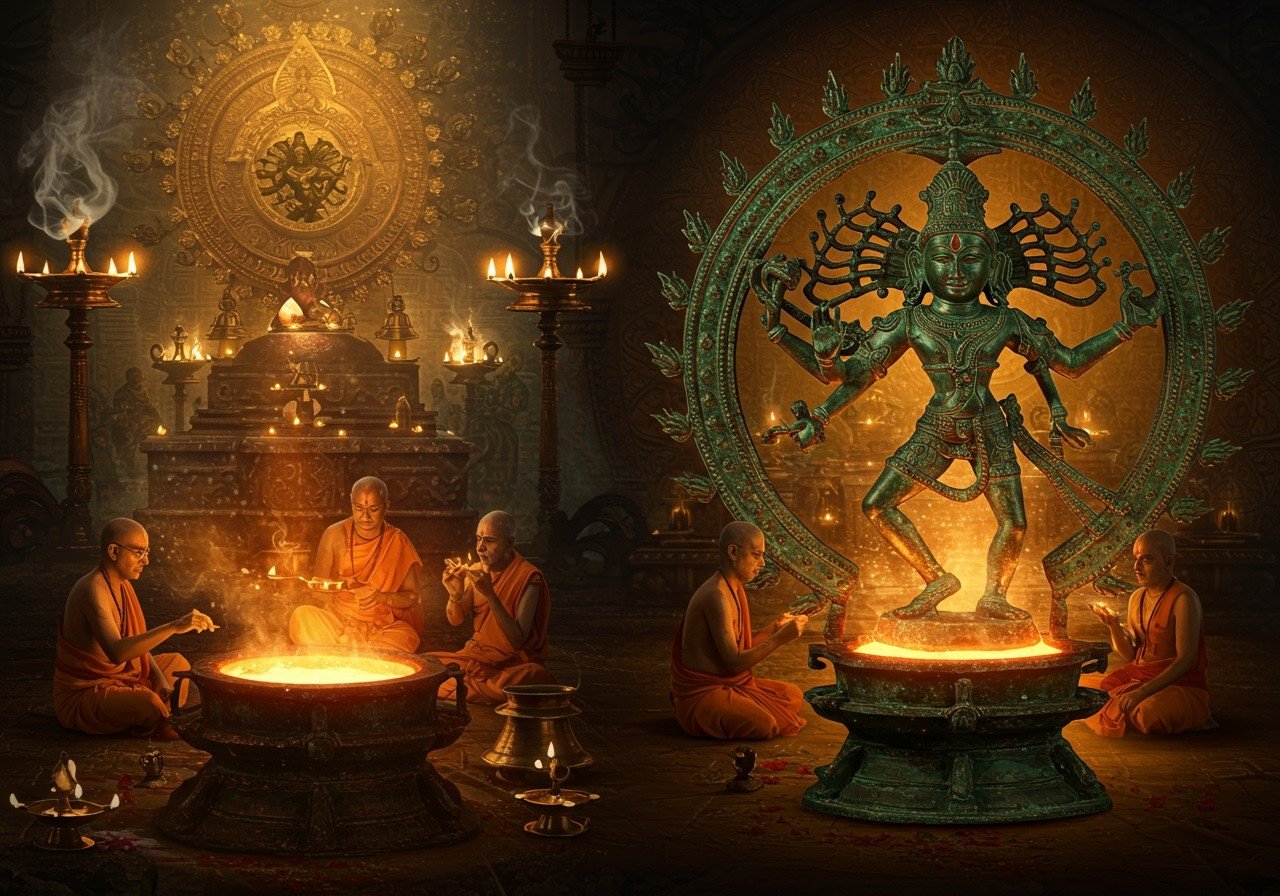
The Vedic period (c. 1500 – c. 500 BCE), encompassing the late Bronze Age and early Iron Age in India, witnessed the composition of the Vedic literature, including the Vedas. Hinduism’s rich history is deeply interwoven with the religious traditions of the Indian subcontinent, some of which can be traced to the prehistoric Bronze Age Indus Valley Civilization (c. 3300-1300 BCE). While the material culture of the Indus people is well-documented, interpretations of their rituals and beliefs remain open to scholarly discussion until their script is deciphered. Understanding this era provides valuable context for appreciating the evolution and continuity of Hindu rituals.
The Impact of Bronze Age Metallurgy
Bronze Age metallurgy revolutionized ritual practices. The development of bronze, an alloy of copper and tin, offered superior properties compared to earlier materials. Archaeological discoveries reveal bronze artifacts such as idols, lamps, and ceremonial vessels used in Vedic rituals. The use of bronze in yajnas (fire sacrifices) continues to hold significance in modern Hindu practices. Poojn.in offers a wide selection of brass idols and ritual items, allowing you to connect with these ancient traditions.
- Bronzes of the Indus Valley Civilization: Discoveries from Harappa and Mohenjo-daro, major centers of the Indus Valley Civilization (c. 3300-1300 BCE), suggest sophisticated metalworking traditions and offer potential insights into early ritual practices. These may have influenced later Hindu iconography, though further research is needed to fully understand the connection.
- Advanced Craftsmanship: Bronze casting required specialized knowledge and skill, highlighting the importance of craftsmanship in creating sacred objects. The intricate designs and durable nature of bronze artifacts speak to the dedication and artistry of Bronze Age artisans. Poojn.in supports contemporary artisans who continue these traditional techniques.
- Preservation of Ancient Artifacts: The durability of bronze has contributed to the preservation of these ritual objects, providing valuable insights into the religious practices of the Bronze Age. These artifacts serve as tangible links to our ancestors and their spiritual beliefs. You can explore a variety of brass items for puja at Poojn.in.
Sacred Spaces: From Ancient Settlements to Modern Temples
The continuity of sacred sites from the Bronze Age to later periods is noteworthy. Many important religious centers today, such as Varanasi, have roots in ancient settlements. The sanctity of these locations was often associated with natural features like rivers and mountains. The transition from open-air altars to elaborate temples reflects the evolution of religious architecture and practices.
- Key Urban Centers: Cities like Varanasi, mentioned in ancient texts, and Mathura, known for its archaeological finds, highlight the continuous inhabitation and religious significance of these locations since ancient times, potentially linking back to the late Bronze Age/early Iron Age.
- Natural Elements and Sanctity: Rivers, mountains, and other natural features played a significant role in designating sacred spaces. These locations were often believed to be imbued with divine energy, influencing the placement of temples and ritual sites.
Symbolism in Vedic Texts
Fire and metalworking hold profound symbolic meaning in the Vedic texts. Fire (Agni) is central to yajnas and represents purity, transformation, and divine communication. The role of the blacksmith in Vedic society underscores the spiritual significance of metalworking, which symbolizes both creation and destruction, mirroring cosmic processes. Poojn.in provides a range of products for traditional fire rituals.
- Agni, the Fire God: Agni is a central deity in Vedic rituals, representing the divine fire that mediates between humans and the gods. Hymns dedicated to Agni emphasize the importance of fire in sacrifices and ceremonies. You can find essential puja items at Poojn.in.
- Hymns and Ritual Importance: Numerous hymns in the Vedas are dedicated to Agni, highlighting the central role of fire in Vedic rituals. These hymns provide insights into the symbolic meaning and practical application of fire in ancient religious practices. Poojn.in offers a selection of resources on creating a sacred space for your rituals.
- Metalworking and Cosmic Processes: Metalworking was not simply a craft but also held deep symbolic meaning. The process of transforming raw materials into intricate objects mirrored the cycles of creation and destruction in the cosmos. This symbolic connection elevated the status of metalworkers and their creations. Explore a wide variety of puja kits and supplies at Poojn.in.
The Evolution and Continuity of Rituals
Hindu rituals have evolved over time, adapting to new social contexts while retaining core elements from ancient traditions. The transition from Vedic to classical Hinduism saw the development of new practices and the codification of rituals in texts like the Puranas. Temple architecture also played a crucial role in preserving and transmitting these traditions.
- Temple Architecture and Rituals: The design and layout of Hindu temples often reflect ancient ritual practices. The spatial organization and symbolic elements within the temple reinforce the connection between the physical space and the spiritual realm. You can find guides to temple etiquette and rituals on Poojn.in.
- Contemporary Practices and Ancient Roots: Many contemporary Hindu rituals have direct links to Bronze Age traditions. The use of fire, specific offerings, and chanting of mantras are examples of practices that have been passed down through generations, reflecting the enduring influence of ancient practices. Learn more about mantras and their significance on Poojn.in.
Modern Relevance and Online Accessibility
Ancient rituals remain relevant in the modern world, offering a connection to our heritage and providing a framework for spiritual practice. Poojn.in makes it convenient to access authentic ritual items online, supporting artisans who continue traditional crafts. By embracing both tradition and technology, we can ensure the preservation of these cultural practices for future generations.


